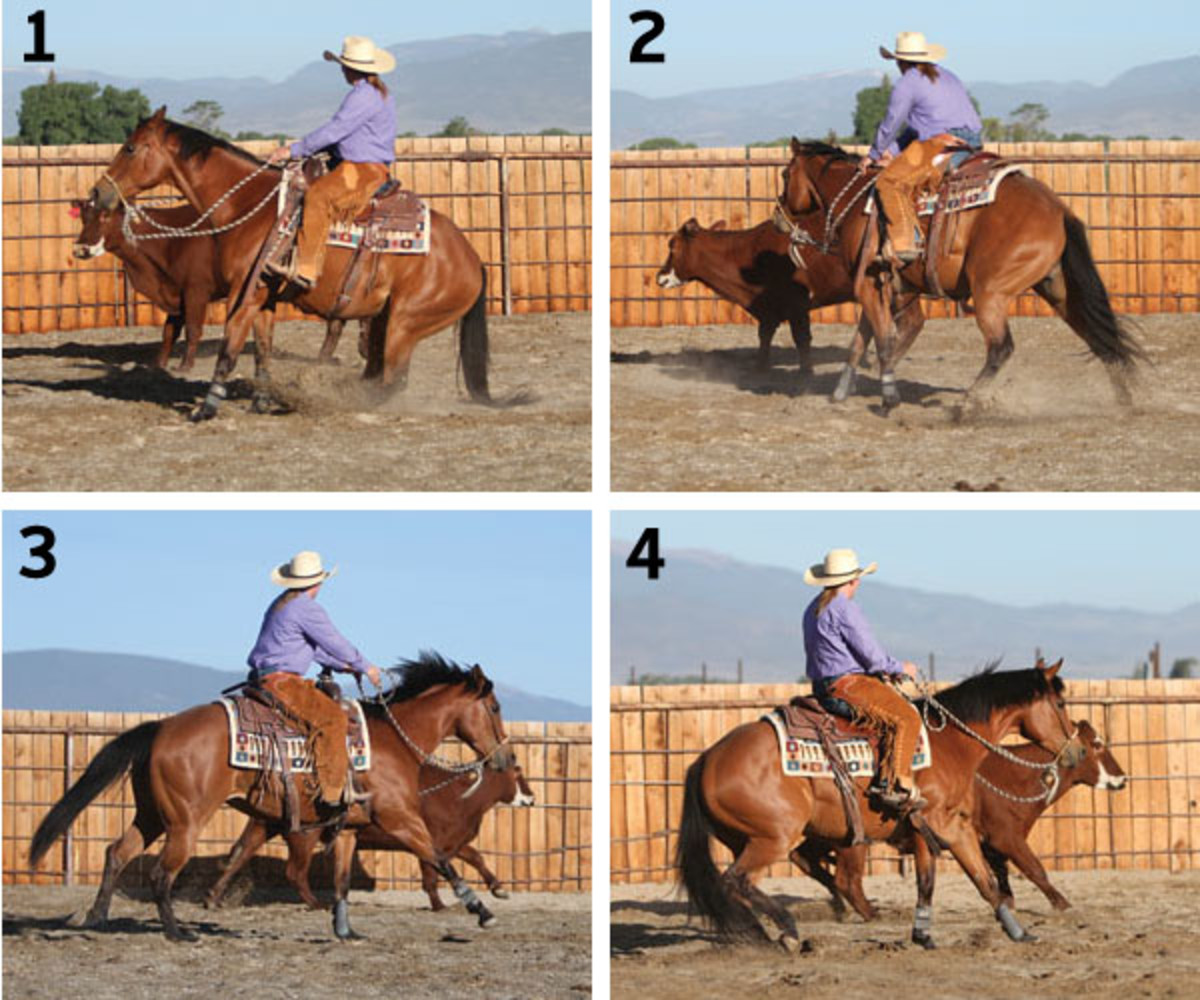Lesson Objective
Achieve a complete stop with the cow, and move on with the cow’s next move, for a points-earning boxing performance.
In the boxing portion of working cow horse and the box-only class, stopping with the cow, getting your horse all the way to the bottom of the stop, and releasing the cow for the next move are essential elements. The rider has to read the cow and bring the horse to a solid stop, then initiate the cow’s next motion, to demonstrate control of the cow. You only have 50 seconds to show your horse in the box-only class, so you must get the most out of every move.
Here I’ll evaluate a horse and rider’s stop, release of the cow, and departure for the cow’s next move, pointing out positive and negative attributes so you can learn how to best perform those maneuvers when boxing a cow.
1. This looks really good. The horse has achieved a complete stop, and the rider has positioned the horse to be ready for the cow’s next move. The rider’s shoulders are square, she’s not leaning to one side or the other, and she’s ready to ride wherever the cow goes from here.

2. After stopping, the rider changed her angle to engage the cow, so her horse can dictate the cow’s next move. She’s riding aggressively here—in boxing, there’s no one to help get your cow going again, unlike herd help in cutting, so she’s working with her horse to push the cow to its next move.
3. Her aggressive riding got the cow to move back down the fence. She’s showing a good example of rate here—she’s not too far behind or in front of the cow. She’s riding with the cow rather than just following along, showing that she’s in control.
4. Horse and rider are covering the cow well here, and the horse is coming to a complete stop with the cow once again. You can see that the mare is set to move forward with the cow again, with her ears forward, her expression bright, and her hind end ready to drive out of the ground for the next move.
5. As they head back down the fence again, the horse and rider are doing a good job reading this cow’s upcoming stop—they’re not too far up on the cow, nor too far behind it. The cow appears to be a little bit ahead, but once all three get stopped, the horse and rider will be in good shape.

6. Now for a few mistakes. Here’s a classic example of the horse not getting all the way to the bottom of a stop. Because of that, the mare can’t turn with the cow and go back down the fence with it. In a training situation, the rider shouldn’t let the horse make the turn; instead, she should make the horse stop all the way, turn to the right, and then back up. Then she could go back after the cow.
7. This time, it looks like the horse and rider were just a little slow to get stopped. If the rider had been quicker to read the cow, stop, and keep the cow “covered up,” she’d be in a better position. The rider is also leaning a little, which makes it harder for the horse to do his job. These small mistakes lead to the rider being behind the cow’s motion.

Blue Allen, Alamosa, Colorado, is an NRCHA world champion trainer and a Snaffle Bit Futurity finalist. He’s an accomplished horseman, shown in his success in training and showing cow horses through all phases, from the snaffle bit to the hackamore to the bridle. He also coaches non-pros, including his wife, Jeannie, shown in the photos above.






